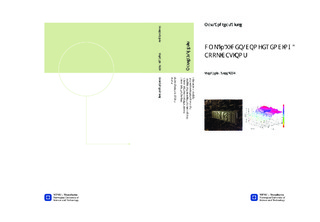| dc.description.abstract | Today's audio in video-conference rooms do not in general have high quality audio standards.Most of the set-ups are PC-Speakers mounted on the wall, with a microphone on the table. With this, strong room modes are often excited from the speakers. When speaking to someone which also have bad equipment, the speech-intelligibility can be really bad. One solution presented with this Master thesis is to improve the loudspeaker set-up by mounting a DML(Distributed Mode Loudspeaker) above and parallel to the conference table. The DML will then radiate sound on both sides of the table equally in opposite phase, like a dipole. This will also minimize sound-radiation to the ceiling and the office-table.The DML is designed and modified from a loudspeaker originally deigned by the loudspeaker-company e-Scape. The Plexiglas panel, made out of an Acrylic material, has exciters mounted on the panel. After testing different combinations of two and three exciters in an anechoic chamber, the polar frequency response of the DML with only one exciter had a much better response than the other combinations.The idea of mounting the DML over the table is that the audience will get closer to the sound source, and room-effects will be very small compared to the direct signal. This should give a much better speech-intelligibility of the perceived sound signal compared to existing solutions. Subjective tests show that the majority of the participants preferred the DML rather than the PC-Speaker in all areas; a more natural sound, more closeness to the one speaking and better speech-intelligibility.One problem, which is seen on the measurements and feedback from the participants on the subjective test, is a low SPL(Sound Pressure Level) in the low frequency area. Under 100Hz the magnitude of the DML is reduced, compared to the response of ordinary monopole speakers. From this frequency area one can also see some dipole effects from the results, which gives us good qualities such as less radiation to the ceiling and the office table. | nb_NO |

